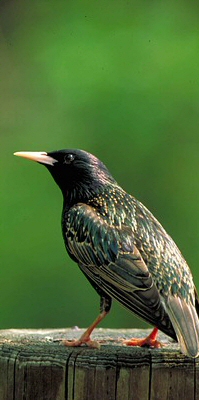If you have never seen the acrobatic displays of a vast flock of starlings, you are missing out on one of nature’s most spectacular phenomena. Visible throughout the autumn and winter, this week’s blog post explains what is going on, and gives a couple of great tips for where to see them. Don’t forget your camera!

| Individually and from a distance, starlings don’t look like much. Up close, they have a little more character, with their brown plumage taking on an iridescent shine. However, it’s really when they group together that they come into their own. Some of the starlings we see in the UK have migrated from colder parts of Europe. Despite them visiting us over our coldest months, our climate is a lot milder than that of their countries of origin. For warmth and safety, they congregate in vast flocks called murmurations, and fill the sky with ever-changing, fluid shapes and movements. These can be seen at dawn and dusk from autumn right the way through winter. As darkness begins to fall, the murmurations drop onto a favoured roosting spot to spend the night. Coniferous forests are a good spot, though reed beds and other geographical features also work. When watching such huge numbers,(sometimes up to 100,000 together in one go), it’s hard to remember that actually starlings are critically endangered in the UK. Their numbers have dropped by 80%, and what was once a common sight even in cities is now mostly reserved for rural areas. A flock may visit many different roosting grounds, so there’s nowhere that you can be guaranteed a view. However, the following two spots seem to be a great place to start: |  |
Roughtor / Lower Moor Plantation
Camelford
Follow the sign for Roughtor from the A39 just north of Camelford. Follow this lane to the end, and you will find a Forestry Commission car park. Facing towards the tor, Lower Moor Plantation can be found along the track to the left. This is where you will find the starlings roosting. When they are they, it is quite an experience to walk through the loud chattering amongst the treetops. For the full murmuration effect, walk as far as you like onto the moor and up the tor, and look back. Don’t forget to take a torch, as it can be tricky getting back to the car in the dark.
Okehampton Camp
This army base is not a visitor attraction in its own right, but often has pretty spectacular murmurations, anytime from September to March. A short drive from the A30, leave your car at the parking bay by Okehampton camp (roughly EX20 1QP). You have various options to improve your vantage point, but we recommend your climb the road towards the south-east. After a few stormy winters, locals were concerned that the starlings had moved on, but in recent years they have made a comeback.
Do you know anywhere else to view starling murmurations? Let us know on social media or in the comments below.






